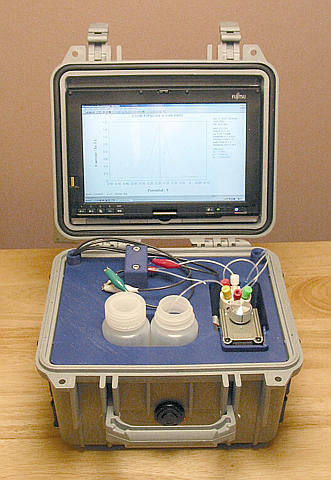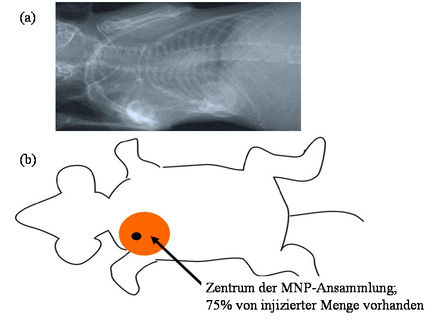New Sensor Detects Ever Smaller Nanoparticles
Novel Optical Resonator Can Track the Movement of Nanoparticles in Space
nanoparticles are omnipresent in our environment: Viruses in ambient air, proteins in the body, as building blocks of new materials for electronics, or in surface coatings. Visualizing these smallest particles is a problem: They are so small that they can hardly be seen under an optical microscope. Researchers of Karlsruhe Institute of Technology (KIT) have now developed a sensor that not only detects nanoparticles, but also determines their condition and tracks their movements in space. The highly sensitive and compact detector, a novel type of Fabry-Pérot resonator, is presented in Nature Communications.

Small and revolutionary: Physicist Larissa Kohler, KIT, has developed a new type of resonator that makes ever smaller nanoparticles visible.
Markus Breig, KIT
Conventional microscopes produce enlarged images of small structures or objects with the help of light. Nanoparticles, however, are so small that they hardly absorb or scatter light and, hence, remain invisible. Optical resonators increase the interaction between light and nanoparticles: They capture light in smallest space by reflecting it thousands of times between two mirrors. In case a nanoparticle is located in the captured light field, it interacts thousands of times with the light such that the change in light intensity can be measured. “The light field has various intensities at different points in space. This allows conclusions to be drawn with respect to the position of the nanoparticle in the three-dimensional space,” says Dr. Larissa Kohler from KIT’s Physikalisches Institut.
Resonator Makes Movements of Nanoparticles Visible
And not only that: “If a nanoparticle is located in water, it collides with water molecules that move in arbitrary directions due to thermal energy. These collisions cause the nanoparticle to move randomly. This Brownian motion can now also be detected,” the experts adds. “So far, it has been impossible for an optical resonator to trackthe motion of a nanoparticle in space. It was only possible to state whether or not the particle is located in the light field,” Kohler explains. In the novel fiber-based Fabry-Pérot resonator, highly reflecting mirrors are located on the ends of glass fibers. It allows us to derive the hydrodynamic radius of the particle, that is the thickness of the water surrounding the particle, from its three-dimensional movement. This is important, because this thickness changes the properties of the nanoparticle. “As a result of the hydrate shell, it is possible to detect nanoparticles that would have been too small without it,” Kohler says. Moreover, the hydrate shell around proteins or other biological nanoparticles might have an impact on biological processes.
Sensor Provides Insight into Biological Processes
A potential application of the resonator may be the detection of three-dimensional motion with high temporal resolution and characterization of optical properties of biological nanoparticles, such as proteins, DNA origami, or viruses. In this way, the sensor might provide insights into not yet understood biological processes.
Original publication
Other news from the department science
These products might interest you

Hose pressure transducer by HiTec Zang
Contactless pressure measurement for sterile applications
Easy-to-install tubing pressure sensors for diameters from 4.8-19.1 mm

FireSting-PRO by PyroScience
New fiber optic measuring device: Precise measurements even in the smallest volumes
Measure pH, oxygen and temperature even under sterile conditions

Get the life science industry in your inbox
By submitting this form you agree that LUMITOS AG will send you the newsletter(s) selected above by email. Your data will not be passed on to third parties. Your data will be stored and processed in accordance with our data protection regulations. LUMITOS may contact you by email for the purpose of advertising or market and opinion surveys. You can revoke your consent at any time without giving reasons to LUMITOS AG, Ernst-Augustin-Str. 2, 12489 Berlin, Germany or by e-mail at revoke@lumitos.com with effect for the future. In addition, each email contains a link to unsubscribe from the corresponding newsletter.
Most read news
More news from our other portals
Last viewed contents
Institute_for_the_Study_of_Academic_Racism

New sensor system improves detection of lead, heavy metals - PNNL develops inexpensive portable detection system for rapid, accurate analysis of toxic metals
Varicella_zoster_virus
Stanisław_Burzyński



















































